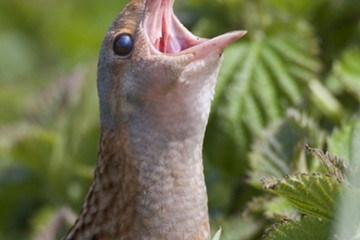Skye Corncrake Survey 2023
28th November 2023

We are very pleased to announce that Corncrake numbers in Scotland have seen their first rise in five years. This year RSPB Scotland’s annual survey found 870 calling males up from 828 the previous year. This takes Scotland’s Corncrake population back to levels not seen since 2019, and whilst still significantly lower than the 2014 high of 1282 calling males, it is a welcome change in direction. The islands of Tiree, Coll and Vatersay & Barra saw the largest increases of 20+ birds with 293 on Tiree, 68 on Coll and 73 on Barra & Vatersay.
On Skye, we found 14 calling males during the annual survey which is on a par with last year. The objective of the annual survey is to provide a count based on a standardised and repeatable method (this number only includes birds heard calling between midnight and 3am, on two visits to each township, between 20 May – 10 July). Using this method for each annual survey is crucial so that the figure is comparable with other areas across Scotland and also between years.
However, on Skye, because we have such a small population (every cloud 😉…) we are able to carry out much more detailed monitoring of the birds. Most years this largely agrees with the annual survey result, but this year thanks to the enthusiasm and dedication of Skye Bird’s reporters, local residents and Skye visitors, (and Robert Arnold’s tireless analyses of all the call recordings!) we know there were at least 18 different calling males
The call pattern, dates heard and the locational information we were provided meant we could work out there were at least 18 different male Corncrakes on Skye. We managed to get 95 recordings of good enough quality to analyse and at least one from almost all the reported birds – thanks to all who reported and recorded 😊. One notable exception was a mysterious bird heard around Portree and Torvaig in June/July (if anyone happened to record this bird please let us know!). The first calling corncrake showed up in Borreraig on April 21, the first in this township for many years. As the season progressed, west Trotternish and Waternish were found to hold most of the calling males with a small number scattered along Skye’s western coast.
Shelagh Parlane


